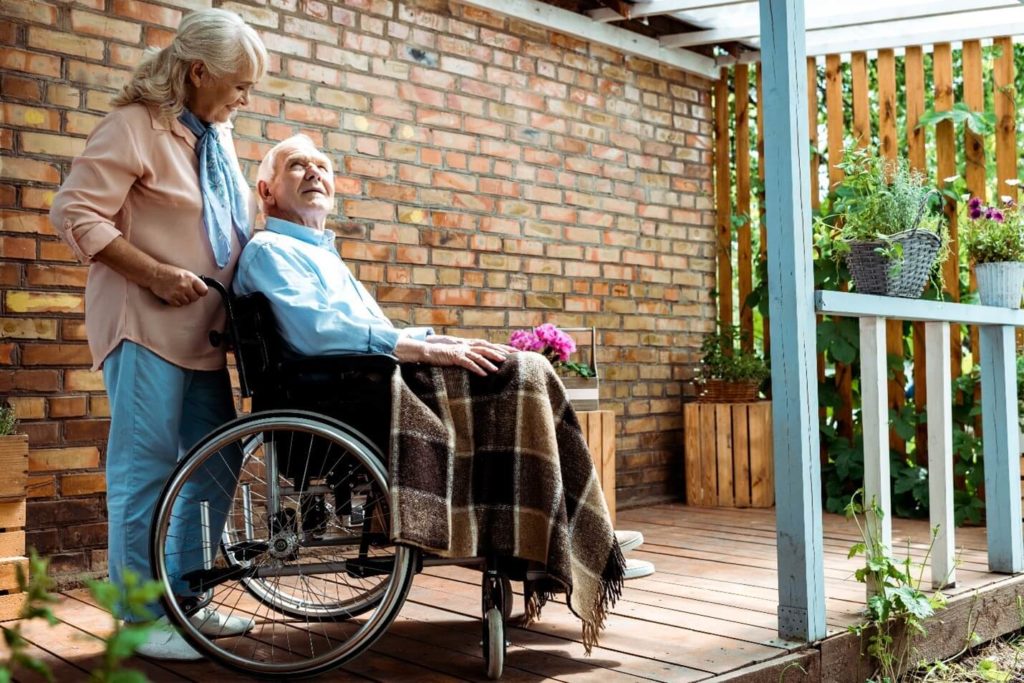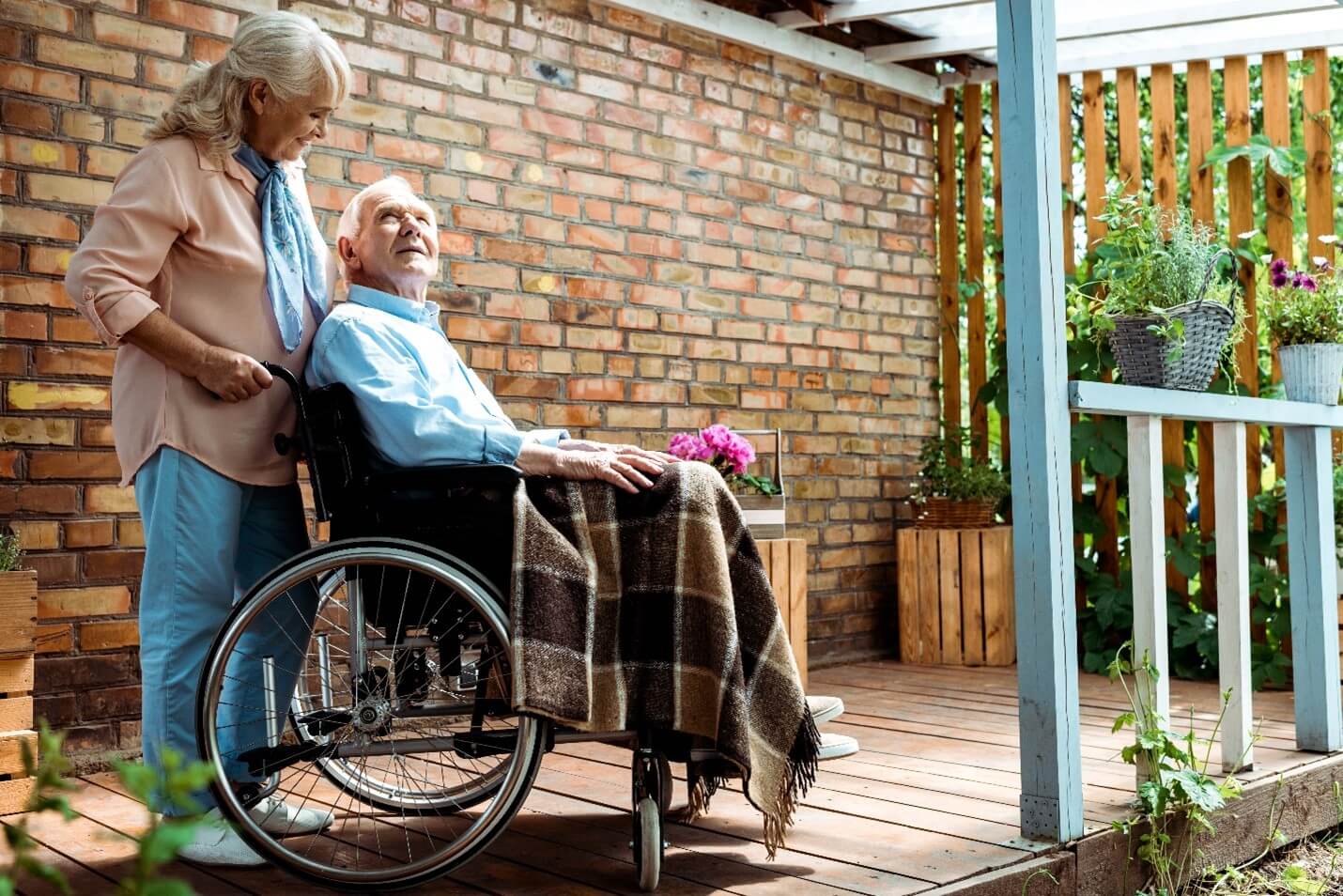The Prevalence of Arthritis in Seniors
As an Amazon Associate I earn from qualifying purchases.
The Prevalence Of Arthritis In Seniors In These Modern Times
Arthritis is a common and widely-reaching condition among the elderly in many countries. Its prevalence, symptoms, and impact on seniors can vary significantly depending on the type of arthritis experienced and other associated factors. This article will provide an overview of the prevalence of arthritis in seniors, as well as its potential impacts and treatments.
The most commonly diagnosed form of arthritis among seniors is osteoarthritis (OA). OA affects almost 27 million adults over the age of 65 in the United States alone. It is estimated that more than 80 percent of adults over 65 years old experience some degree of OA, making it one of the most pervasive chronic conditions among this age group.
Rheumatoid arthritis (RA) is also a prevalent form of arthritis among seniors, although not to the same degree as OA. While RA typically presents itself earlier in life, its prevalence increases with age, affecting about 1.5 million adults over 65 in the US. Along with OA and RA, there are several other forms of arthritis that affect seniors to varying degrees; these include gout, lupus, psoriatic arthritis, and others.

Osteoarthritis
Osteoarthritis is a degenerative joint disease that primarily affects individuals over the age of 65. It is characterized by joint pain, stiffness, and loss of function due to damage to the cartilage and surrounding structures. The most commonly affected joints are those in the hands, spine, hips, and knees. Osteoarthritis can cause severe disability in advanced stages leading to difficulty performing everyday activities such as walking or dressing oneself.
The prevalence of osteoarthritis increases with age and is estimated to affect more than 20% of seniors over 65. Risk factors include older age, prior injury to the joint, genetics, obesity, as well as occupational activities that involve repetitive motion or excessive strain on the joints. Additionally, women are more likely than men to develop osteoarthritis due to their increased risk for knee injuries from ligament tears or meniscus damage.
Treatment for osteoarthritis includes both non-surgical and surgical options depending on the severity of symptoms. Non-surgical treatments may include physical therapy or exercise programs to improve strength and range of motion; medications such as non-steroidal anti-inflammatory drugs (NSAIDs) or corticosteroids; lifestyle modifications such as weight loss; and assistive devices such as braces or canes for improved mobility. Surgery may be recommended if non-surgical treatments fail to provide relief from symptoms.
Treatments For Osteoarthritis
There are a variety of treatments available to help manage the pain and discomfort associated with osteoarthritis. Non-surgical treatments include physical therapy, medications, injections, and lifestyle modifications. Physical therapy focuses on strengthening the muscles surrounding the affected joint and improving range of motion. Medications such as nonsteroidal anti-inflammatory drugs (NSAIDs) can help reduce inflammation and pain. Injections such as corticosteroids may be used to decrease swelling in the joint. Lifestyle modifications such as weight loss, limiting activities that cause pain or discomfort, and using assistive devices like canes or walkers can also be beneficial for those suffering from osteoarthritis.
Surgical treatment is usually considered when other treatments have been unsuccessful in managing symptoms. Surgery may involve joint replacement or a procedure called arthroscopy that involves trimming away damaged cartilage or tissue. The goal of surgery is to improve range of motion, reduce pain, and increase function in the affected joint. Recovery time is variable depending on the type of procedure performed but typically takes several weeks to months before full recovery is achieved.
It is important for those suffering from osteoarthritis to understand their condition and be aware of available treatment options so they can make informed decisions about their care. It is equally important for them to work closely with their healthcare provider throughout their treatment plan to ensure optimal results.
Lifestyle Interventions
The lifestyle interventions recommended to seniors with arthritis include physical activity, weight management, and ergonomic modifications. Studies have shown that physical activity can improve the quality of life for individuals with arthritis. Regular exercise can help reduce pain, increase mobility and flexibility, and strengthen the muscles around affected joints. Exercise such as walking, biking, swimming, or strength training can also be beneficial in reducing fatigue associated with arthritis. Another important part of managing arthritis is maintaining a healthy body weight. Excess weight puts additional stress on affected joints and can lead to further pain and disability. Lastly, ergonomic modifications may help individuals manage their symptoms by allowing them to move without exacerbating their condition. This includes using assistive devices such as cane or walkers for support, wearing supportive shoes or splints to reduce strain on joints, and using adaptive equipment for activities like cooking or cleaning.
Overall lifestyle interventions are an important part of managing arthritis symptoms in seniors. A combination of regular exercise tailored to individual needs along with maintaining a healthy body weight and making necessary ergonomic modifications can help seniors with arthritis achieve better outcomes and improved quality of life.
Medications
Medication is an important element of managing arthritis in seniors. Nonsteroidal anti-inflammatory drugs (NSAIDs) are often the first line of treatment, followed by disease modifying antirheumatic drugs (DMARDs). NSAIDs reduce inflammation and pain, while DMARDs slow down the progression of the disease. Corticosteroids are also commonly used to reduce inflammation and pain.
Physical therapy can be beneficial for seniors with arthritis, as it helps to strengthen muscles that support joints and maintain range of motion. It can also help to improve balance and coordination, which can prevent falls and other injuries. Exercise is also important for maintaining overall health and wellbeing in seniors with arthritis.
In addition to physical activity, lifestyle changes can help manage arthritis symptoms in seniors. Eating a healthy diet, staying hydrated, avoiding smoking, reducing stress levels and getting adequate rest are all important components of a successful treatment plan.
Surgeries
Surgical interventions for arthritis in seniors may be recommended when medications and other non-invasive treatments fail to provide relief. Surgery is generally used to treat severe arthritis that causes pain, limited range of motion, inflammation, and instability. Surgical options include joint fusion, joint replacement, tendon repair or reconstruction, synovectomy (removal of the lining of the joint), osteotomy (a procedure that realigns the bones to reduce stress on joints), and arthrodesis (joint fusion).
Joint fusion involves fusing the two bones together so they can no longer move independently. This procedure reduces pain and increases stability but also limits mobility. Joint replacement surgery replaces a damaged joint with an artificial one made from metal or plastic components which helps restore mobility and reduce pain.
Tendon repair or reconstruction is used to correct instability caused by tendon laxity or rupture. Synovectomy removes the lining of the joint which helps reduce inflammation and pain in arthritic areas. Osteotomy realigns bones to improve their alignment and reduce stress on arthritic joints while arthrodesis fuses the two bones together so they can no longer move independently – thereby reducing pain but limiting mobility.
Final Thoughts
The prevalence of arthritis in seniors is a significant public health concern. Seniors are more likely to suffer from the condition due to their age and physical limitations. A number of factors can increase the risk of developing arthritis, such as obesity, physical activity levels, genetics, and certain medications. It is important to be aware of these risk factors so that interventions can be put in place to reduce their effects.
In order to better understand the prevalence of arthritis in seniors, studies should examine not only the number of individuals affected by the condition but also its impact on quality of life and healthcare utilization. This would enable a better understanding of how widespread the issue is and allow for more targeted interventions. Additionally, further research into treatments and prevention strategies should be conducted in order to improve care for those living with arthritis.
It is clear that much more needs to be done in order to understand and reduce the burden of arthritis among seniors. With continued research and education about this condition, seniors can be better supported in managing their condition and leading healthier lives.
Frequently Asked Questions
What Are The Risk Factors For Developing Arthritis?
Arthritis is a condition that affects many people and can have a significant impact on quality of life. As such, it is important to understand the risk factors associated with developing arthritis. Primarily, these include age, genetics, and lifestyle choices. Being older is one of the most common risk factors for developing arthritis; however, other factors like genetics can also play a role in an individual’s likelihood of developing the condition. Additionally, some lifestyle choices such as weight gain, smoking, or physical activity may increase an individual’s chances of experiencing arthritis.
The age factor in relation to arthritis risk is well-established. Generally speaking, the older an individual is, the more likely they are to develop arthritis. This is due to wear and tear on joints over time which can result in inflammation and damage; additionally, those who are elderly are much more likely to have genetic predispositions towards certain types of arthritis than younger individuals. Additionally, obesity has been linked to increased cases of arthritis due to the additional strain placed on joints by carrying extra weight around. Similarly, smokers are at an increased risk of developing rheumatoid arthritis due to their habit affecting their immune system negatively. Finally, those with sedentary lifestyles may be more prone to developing osteoarthritis because they do not have adequate protection for their joints when engaging in physical activities.
In order to reduce one’s likelihood of being affected by arthritis it is important to consider how age and lifestyle choices can play a role in increasing one’s risk for this condition. Managing weight and staying active can help protect joints from further damage caused by inflammation or wear-and-tear; additionally quitting smoking or avoiding it altogether may be beneficial if one wishes to reduce their likelihood of experiencing rheumatoid arthritis later in life. Taking preventative measures now can help ensure that one does not experience discomfort from this chronic condition down the road.
Is There A Way To Prevent Arthritis?
Arthritis is a condition that affects millions of people around the world, and it is particularly prevalent among seniors. While there are risk factors associated with developing arthritis, such as age, gender, family history, and excess weight, it is important to consider whether there is any way to prevent it from occurring in the first place.
Research has shown that there are various lifestyle changes that can help to protect against the onset of arthritis. For example, studies have indicated that regular exercise can strengthen muscles and joints and reduce stiffness and pain. Additionally, maintaining a healthy weight can reduce strain on the joints, while eating a balanced diet rich in vitamins and minerals may also provide some protection against inflammation. Furthermore, avoiding tobacco use and excessive alcohol consumption may help ward off the development of arthritis.
These measures may not be able to completely eradicate the risk of developing arthritis; however, they could potentially reduce its prevalence in seniors if implemented regularly over time. Ultimately, taking preventive steps could be beneficial for individuals of all ages in order to ensure healthy bones and joints throughout life.
Are There Any Natural Remedies For Arthritis?
Arthritis is a common ailment, particularly among seniors. This condition is characterized by inflammation and pain in the joints, which can cause discomfort and impede mobility. Thus, it’s important to consider potential treatments for arthritis that are natural and safe. In this context, one might ask: are there any natural remedies for arthritis?
The answer to this question is yes; there are a variety of natural remedies available for those suffering from arthritis. Many of these are dietary in nature and involve consuming certain foods or supplements known to reduce inflammation. Examples include fish oil, turmeric, and ginger. Moreover, some experts suggest exercising regularly as part of an overall health plan to relieve arthritis symptoms. Exercise has been shown to improve range of motion and reduce stiffness associated with the condition.
In addition to diet and exercise, alternative therapies such as massage therapy may also be beneficial for relieving pain caused by arthritis. Massage therapy helps reduce inflammation while promoting relaxation and improved circulation throughout the body. Other options include acupuncture, yoga, tai chi, and hydrotherapy, all of which can help manage the symptoms of arthritis in seniors.
Overall, there are numerous natural remedies available that may provide relief from the symptoms of arthritis in seniors. As with any medical treatment plan, it’s important to consult a healthcare professional before making any changes to one’s lifestyle or diet in order to ensure safety and effectiveness.
What Exercises Can Be Done To Help Manage Arthritis Symptoms?
Exercise is an important factor in managing the symptoms of arthritis. It has been shown to reduce pain, improve range of motion, and increase strength. Additionally, exercise can help manage other related issues such as weight loss, poor posture, and reduced physical activity. There are several types of exercises that may be beneficial for people with arthritis.
Aerobic exercises are those activities that involve continuous movement and raise the heart rate. Examples include walking, jogging, swimming, biking and dancing. These activities can help increase endurance, improve joint flexibility, enhance cardiovascular fitness and reduce fatigue. Strength training is also beneficial for people with arthritis since it helps to build muscle strength and bone density while also increasing joint stability. Exercises such as weightlifting or resistance bands can be used to strengthen muscles around the joints affected by arthritis.
Stretching is another type of exercise that can help reduce stiffness and pain associated with arthritis due to its ability to improve flexibility of the joints affected by the condition. Examples of stretching exercises include neck rolls, shoulder shrugs, arm circles and leg raises. Finally, balance exercises such as standing on one foot or using a wobble board can be used to improve coordination and stability while reducing the risk of falls.
By incorporating these various exercises into a regular routine it can help improve mobility and functioning while reducing pain associated with arthritis symptoms. Furthermore, exercise can lead to improved overall health since it helps decrease stress levels while increasing energy levels in addition to helping maintain a healthy weight which in turn reduces pressure on affected joints.
How Does Arthritis Affect The Quality Of Life For Seniors?
Arthritis is a common degenerative joint disease that affects the quality of life for those living with it. Symptoms may vary depending on the type of arthritis, but generally include pain, stiffness, and swelling in the joints. Seniors are particularly susceptible to arthritis, as it is more common among older adults. This article will explore how arthritis can affect the quality of life for seniors.
The physical symptoms of arthritis can be debilitating and cause significant discomfort to those affected. Pain and swelling in the joints can make daily activities difficult or even impossible to perform. Mobility may become impaired due to inflammation in the joints which can limit a person’s ability to move around freely. Furthermore, reduced mobility can lead to an overall decrease in physical activity levels which can have health implications such as increased risk of developing other chronic conditions and increased risk of falls and fractures.
Beyond its physical effects, arthritis may also lead to emotional distress due to feeling limited by its symptoms or from feelings of isolation caused by not being able to engage in activities one normally would enjoy doing with friends or family members. Depression is also a common side effect for people living with long-term chronic illnesses such as arthritis as they cope with their diagnosis and its associated limitations on their lives.
Overall, it is clear that arthritis has a significant impact on the quality of life for seniors who are struggling with its symptoms. Its physical limitations can impair daily activities while its psychological effects can cause feelings of depression and isolation. It is important for those affected by arthritis to seek medical advice from healthcare professionals regarding available treatments and management options so they can better manage their condition and maintain an optimal quality of life despite its presence.
Conclusion
It is evident that the prevalence of arthritis in seniors is on the rise. Research has revealed that certain risk factors increase the likelihood of developing arthritis, including age, gender, family history and obesity. With this in mind, it is important to consider what preventive measures can be taken to reduce the risk of arthritis. Although there is no guaranteed way to prevent arthritis, lifestyle changes such as maintaining a healthy weight and engaging in regular exercise may help reduce the risk.
Natural remedies are an option for those looking to manage their arthritis symptoms without relying on medication. Examples include dietary supplements such as fish oil and turmeric, topical treatments like capsaicin cream, and acupuncture or massage therapy. Exercise can also help manage arthritis symptoms by improving muscle strength and flexibility.
Arthritis has a significant impact on quality of life for seniors, especially when mobility becomes limited due to joint pain or stiffness. It is important for seniors with arthritis to have access to resources for symptom management and support so that they can live full lives with minimal disruption from their condition. In conclusion, understanding the risk factors associated with developing arthritis and taking preventive measures are key components in managing this condition.
Amazon and the Amazon logo are trademarks of Amazon.com, Inc, or its affiliates.

